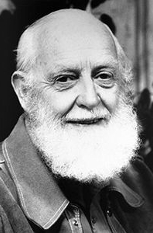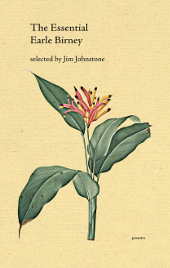The Porcupine's Quill
Celebrating forty years on the Main Street
of Erin Village, Wellington County
BOOKS IN PRINT
The Essential Earle Birney by Earle Birney and Jim Johnstone
The Essential Earle Birney presents a wide-ranging selection of the celebrated Canadian poet’s most memorable verse.
Over the course of a career spanning five decades, Canadian poet, novelist and playwright Earle Birney produced some of Canada’s best-known poems. The Essential Earle Birney contains a selection of his pivotal works, including early break-out successes; nuanced, mid-career lyrics; avant-garde experiments; and beautiful, deceptively simple love poetry. From ‘David’ to ‘Bushed’ to ‘Anglo-Saxon Street’, this indispensable collection reaffirms Birney’s position as a key figure in modern Canadian poetry.
The Essential Poets Series presents the works of Canada’s most celebrated poets in a package that is beautiful, accessible, and affordable. The Essential Earle Birney is the 10th volume in the series.
Table of contents
Foreword
1940-1951
David
Vancouver lights
Anglosaxon street
The road to Nijmegen
Mappemounde
Canada: case history: 1945
From the hazel bough
Ulysses
Can. Lit.
Takkakaw Falls
Bushed
1952-1970
Ellesmereland
Ellesmereland II
Twenty-third flight
A walk in Kyoto
The bear on the Delhi road
El Greco: Espolio
Caribbean kingdoms
Cartagena de Indias, 1962
Epidaurus
Canada Council
Museum of man
1971-1987
first aid for poets
She Is
On her twenty-sixth
Fall by fury
coming back from the airport
Copernican fix
my love is young
About Earle Birney
A Bibliography
Review text
The tropes that appear in Birney’s poetry are both quietly political and overtly sincere, experimental and traditionally sound.
The poems in The Essential Earle Birney represent the spirited work of a poet’s career stretching from 1940 to 1987. Birney is a well-known and respected Canadian writer and medieval literary scholar, and his poetry is, according to Jim Johnstone’s foreword to this edition, "striking for both its prescience and its range." After the publication of his poem "David"—Johnstone calls it "the quintessential Canadian poem of the 20th Century"—Birney’s work began attracting broader attention.
"David" is the poem that opens this collection; it is broken up into nine sections and operates in a way that stands out amid his other work. Notably, a harrowing narrative drives it forward, yet in its language and allusions, the poem can very much be read as an elegy to a lost companion. In the final stanza, a sort of marriage between the narrative and the speaker’s internal voice emerges: "I will not remember how or why I could twist / Up the wind-devilled peak, and down through the chimney’s empty / Horror."
There is something astonishing about Birney’s ability to bring the natural world into direct confrontation with an equally vulnerable internal voice. The juxtapositions in "David" between the upward force of the mountain peak and the downward horror of a chimney can be seen as aiding the biblical undertones that run under the poem, yet these sources and allusions are never directly addressed, and they don’t need to be. Birney’s eye is spare and genuine enough to lead a reader slowly into a poem’s thematic implications.
Most of the pieces in this collection are ordered chronologically as they were written, resulting in a kind of panoramic vision of the poetry’s evolution over time. Poems written during the sixties and seventies seem to return to a kind of minimalistic sincerity in their lack of punctuation and capitalization; line breaks and spaces are given more significance compared to some of Birney’s earlier work, and love poems begin to emerge in a language that is refreshingly colloquial.
The natural world in these later poems, however, is one that becomes increasingly unfamiliar, at combat with the advancements and speed of a modern society. "Twenty-third flight" starts this way: "Lo as I pause in the alien vale of the airport / fearing ahead the official ambush / a voice languorous and strange as these winds of Oahu / calleth my name." In this poem in particular, there is an obvious tone of satire, but there’s also an unmistakable sadness of sorts, something uncalled for that speaks under the surface of the speaker’s awareness.
The tropes that appear in Birney’s poetry are both quietly political and overtly sincere, experimental and traditionally sound. It isn’t an easy feat for a poet to develop and change as he did, and if his work is to survive and be collected, it should be acknowledged as living, for as Birney stated, "Living art, like anything else, stays alive only by changing."
—Kenny Jakubas, Foreword Reviews
Introduction or preface
When Earle Birney published ‘David’ in The Canadian Forum in 1941, he was 37 years old. ‘David’ would go on to become the centerpiece of his first book, and its popularity was such that it was reprinted in both his second and third collections. Although he was a late starter, Birney would go on to write over twenty books of poetry as well a myriad of short stories, radio plays and scholarly articles. But it was ‘David’ that became his most enduring work—a 200-line narrative poem that explores the mercy killing of the eponymous David after a fall from a mountain ridge. It was career-defining not only due its ubiquity on the national stage—an argument could be made that it’s the quintessential Canadian poem of the 20th century—but also, as Carmine Starnino writes in Lazy Bastardism: "[as] the poem [Birney] tried his entire career to defeat."1 Consequently, much of Birney’s later work can be read as reactionary, writing against what A.J.M. Smith called "the simple and unified narrative [of] ‘David’."2
The work that followed the publication of David and Other Poems (1942) is striking for both its prescience and its range. Birney was one of the foremost medieval literary scholars of his day, and several of his early poems incorporated Anglo-Saxon alliterative structures and diction. The most successful of these pieces, ‘Anglosaxon street’ and ‘Mappemounde’, were written during the Second World War and modernize Chaucerian cadences to articulate the social anxieties of the time. Birney was also a satirist, as can be seen in ‘Twenty-third flight’, and he sustained an interest in political irony, penning sequels to his poem ‘Canada: case history: 1945’ in 1973 and 1985. His other dominant poetic modes included travelogues (‘A walk in Kyoto’), short lyrics (‘From the hazel bough’), elegies (‘Cartagena de Indias, 1962’) and even concrete poems (‘Canada Council’).
Foremost in Birney’s poetic output stands ‘Bushed’, published in Trail of a City and Other Verse (1952) of which Northrop Frye wrote: "that for the virtuosity of language there has never been anything like it in Canadian poetry."3 The pinnacle of Birney’s existential lyricism, ‘Bushed’ examines the distortion of an unnamed trapper’s soul due to isolation. Consider the following stanza:
But the moon carved unknown totems
out of the lakeshore
owls in the beardusky woods derided him
moosehorned cedars circled his swamps and tossed
their antlers up to the stars
then he knew though the mountain slept the winds
were shaping its peak to an arrowhead
poised
Teeming with menace, these lines capture Birney in mid-career, when his poetry was at its most nuanced and muscular. Along with ‘David’, ‘The bear on the Delhi road’, ‘El Greco: Espolio’, and ‘Cartagena de Indias, 1962’, ‘Bushed’ established Birney as one of the finest Canadian poets of the 20th century.
In The Creative Writer (1966), a collection of lectures that Birney prepared for the CBC, the poet asserted: "Living art, like anything else, stays alive only by changing."4 His poetry reflects this statement—Birney made significant edits to many of his most canonized pieces throughout his career, despite criticism. Birney’s Selected Poems (1966) can be seen as something of a sea change in this regard: nearly every poem in the book was reformatted to remove punctuation, with the notable exception of ‘David’. The grammatical and typographical changes that began in Selected Poems were refined further in The Collected Poems of Earle Birney (1975), and it’s from this point forward in Birney’s bibliography that the poems in this volume have been chosen.
The transformation of Birney’s work in the 1960s and 1970s was accompanied by a reevaluation of his poetics. He addressed this in the preface to Ghost in the Wheels: Selected Poems (1977), when he wrote: "I should say at the start that I don’t any longer like the words "poet," "poems," etc. They’ve developed pretentious connotations. I prefer "maker" and "makings." They mean the same but the texture’s plainer, oatmeal, not manna."5 Far from being an idiosyncrasy, the removal of rhetorical and syntactic markers in Birney’s work corresponds with his desire for "indefinitely delayed communication."6 While this was considered unnecessary at the time, today the ambiguity created by Birney’s editorial changes charge the general reader with discovery, and reward open-ended interpretations of his poems by creating enjambments that mimic song.
Despite the fact that the poems chosen in The Essential Earle Birney are retroactively stylized in a manner that unifies them, chronology is significant when considering Birney’s output. A meticulous record-keeper, the poet kept track of the date of initial composition and completion of all his work. This record is helpful when tracing Birney’s development in relation to his contemporaries, and the poems in this volume are arranged chronologically to allow for juxtaposition while also establishing the trajectory of Birney’s writing life. Some of his most radical poems, written during a period of linguistic experimentation that saw him align with the avant-garde in the late 1960’s, benefit from comparison with poets of that era.
While Birney never abandoned his experimental instincts, he devoted much of his last 20 years to writing a sequence of extraordinary love poems for his partner, Wailan Low. Represented here by ‘She Is’, ‘On her twenty-sixth’, ‘coming back from the airport’ and ‘my love is young’, his final poems are remarkable for their directness, honesty, and deceptive simplicity. A synthesis of Birney’s playful nature and technical mastery, the poems for Wailan distill the youthful exuberance of their relationship in intensely personal terms. More than anything else he wrote, these lyrics capture Birney unguarded, and they provide a fitting epilogue to one of the most diverse bodies of work of the 20th century.
1. Starnino, Carmine. Lazy Bastardism. Kentville, Nova Scotia: Gaspereau Press. 2012. Print.
2. Smith, A.J.M. "A Unified Personality: Birney’s Poems." A Salute to Earle Birney. Spec issue of Canadian Literature 30 (1966): 3-13. Print.
3. Frye, Northrop. The Bush Garden: Essays on the Canadian Imagination. Toronto: Anansi, 1971. Print.
4. Birney, Earle. The Creative Writer. Toronto: Canadian Broadcasting Corporation, 1966. Print.
5. Birney, Earle. Ghost in the Wheels: Selected Poems. Toronto: McClelland & Stewart. 1977. Print.
6. Milton Wilson. "Poet Without a Muse." A Salute to Earle Birney. Spec issue of Canadian Literature 30 (1966): 14-20. Print.
—Jim Johnstone
Earle Birney was a poet, novelist, and playwright whose experimental instincts drove him to create some of Canada’s most diverse and recognizable poetry, including the oft-anthologized ‘Anglosaxon Street’, and ‘David’, which is often considered the most popular Canadian poem of all time. Born in Calgary, Alberta, Birney was raised on a farm before embarking on an academic career, attending the University of British Columbia, the University of Toronto, the University of California, Berkeley, and the University of London, where his interest in Old and Middle English led to a reputation as an accomplished scholar of medieval literature. After serving as a personnel officer in WWII, Birney took a professorship at the University of British Columbia, where he spent twenty years travelling, writing, and teaching. In 1965, Birney became the first Writer in Residence at the University of Toronto, mentoring new, up-and-coming poets and branching out into new and experimental forms.
Birney died in Toronto in 1995 after an impressive career spanning several decades, over twenty books of poetry, two Governor General’s Awards, and several plays, novels, short stories, and works of non-fiction.
Jim Johnstone is a Toronto-based poet, editor, and critic. He is the author of seven books of poetry, and his essays and reviews have appeared in magazines such as Canadian Notes & Queries, The Kenyon Review, Maisonneuve, The Manchester Review, Poetry, Poetry Northwest, The Rumpus, and The Rupture. In 2016, he was the second Canadian to win Poetry’s Editors Prize for Book Reviewing.
The Porcupine's Quill would like to acknowledge the support of the Ontario Arts Council and the Canada Council for the Arts for our publishing program. The financial support of the Government of Canada through the Canada Book Fund (CBF) is also gratefully acknowledged.








